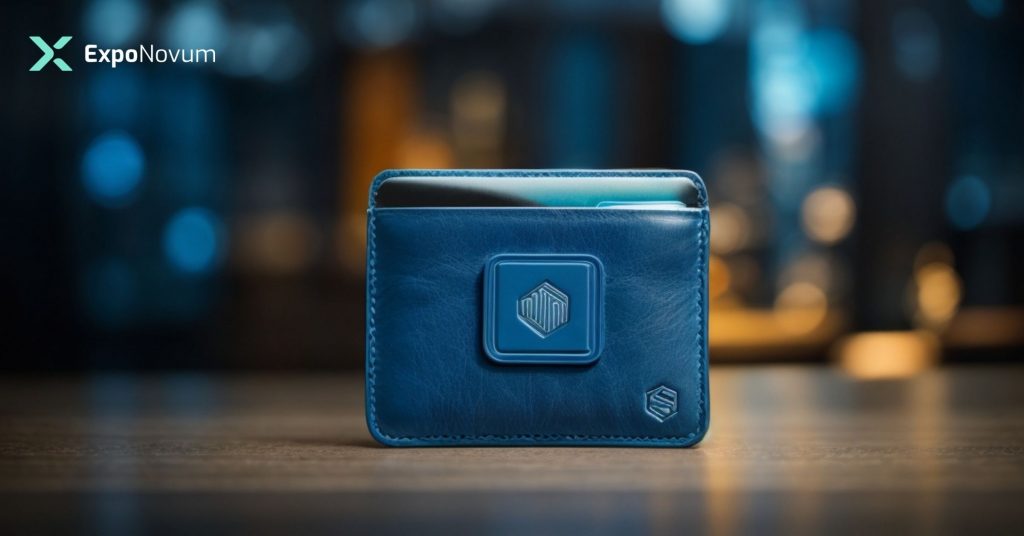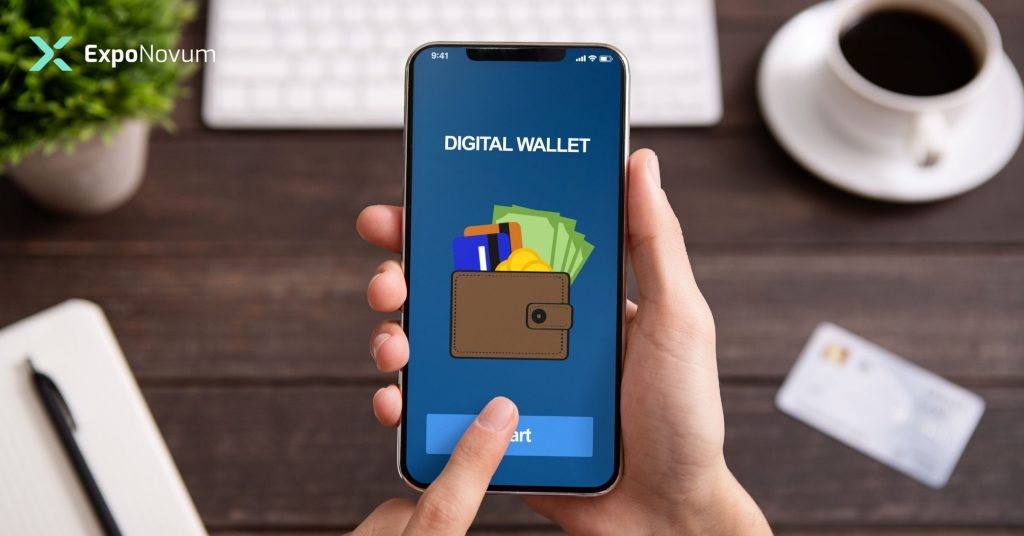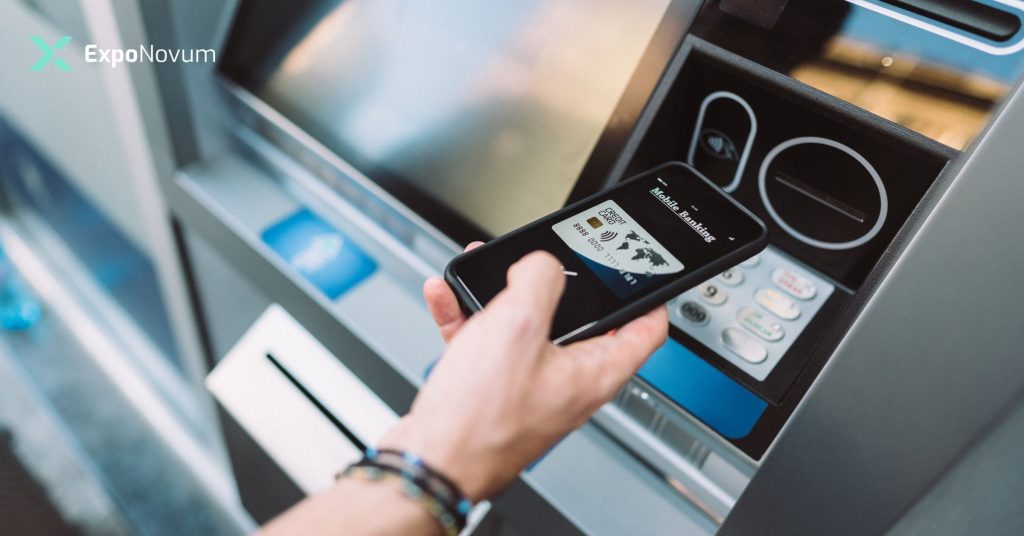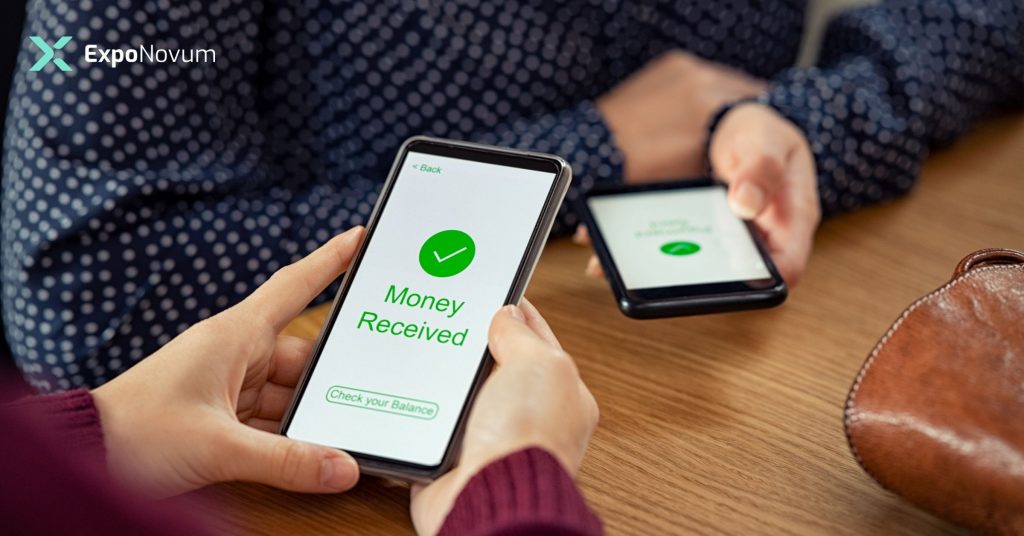Introduction
In today’s fast-paced digital age, convenience is king. As we’ve transitioned from cash to cards, a new player has entered the arena, promising even greater ease and efficiency: the digital wallet. But with this rise in popularity, a pressing question emerges: Are digital wallets safe? Let’s dive deep into the world of digital wallets, understand their mechanics, and address the concerns surrounding their safety and security.

What is a Digital Wallet?
Imagine a world where you no longer need to fumble around in your bag or pocket for your wallet, sift through various cards, or count exact change. Welcome to the world of digital wallets! In essence, a digital wallet is a virtual storage system, primarily used for making electronic transactions. It’s like a digital version of your physical wallet, right at your fingertips.
Storing Credit, Debit, and Gift Card Information
At its core, a digital wallet allows you to store various payment methods. This includes:
- Credit Cards: Just like the plastic card but without the physicality.
- Debit Cards: Direct access to your bank funds, digitally.
- Gift Cards: Store them digitally and never worry about losing them again.
The beauty of it? You can access all these payment methods via your computer, smartphone, or any smart device.
Making Payments via Computer, Smartphone, or Smart Devices
The process is simple:
- Choose your preferred payment method stored in your digital wallet.
- Authenticate the transaction (this could be via a password, fingerprint, or even facial recognition).
- Voila! Your payment is made.
No more swiping or inserting cards. No more signing paper receipts. It’s all digital, quick, and efficient.
Popular Digital Wallet Platforms
There’s a myriad of digital wallet platforms out there, each with its unique features and benefits. Some of the most popular ones include:
- Apple Pay: Exclusively for Apple device users, it’s integrated into iPhones, iPads, and Apple Watches.
- Google Pay: Google’s answer to digital payments, available for Android users.
- Samsung Pay: Samsung’s proprietary payment system for its range of smartphones.
- PayPal: A pioneer in the online payment space, it allows for both online shopping and peer-to-peer money transfers.
- Venmo: Owned by PayPal, it’s especially popular among millennials for splitting bills and sending money to friends.
- Zelle: Often integrated directly into banking apps, making peer-to-peer transfers a breeze.
Read more:
Mastering The World of Alternative Payment Methods: A Comprehensive Guide
Alternative Payment Methods for Small Businesses: What You Need to Know
Breaking Barriers: How Alternative Payment Methods Are Reshaping E-commerce in 2023
The Convenience Factor: How Digital Wallets Have Revolutionized Payments
Remember the last time you were at a café, and you realized you forgot your wallet? Or that time you had to split the bill, and everyone started doing mental math? Digital wallets are here to make all of that a thing of the past.
With just a few taps on your phone, you can:
- Pay for your coffee.
- Split the dinner bill.
- Send a gift to a friend.
It’s not just about payments, though. Digital wallets also allow you to store loyalty cards, boarding passes, and even event tickets. Say goodbye to the days of carrying a bulky wallet or purse filled with cards and hello to the age of digital convenience!
Evolution of Digital Wallet Technology
The concept of a digital wallet isn’t entirely new. The seeds were sown with online banking and e-commerce. But the landscape has evolved rapidly in the last decade. So, how did we get from basic online transactions to the sophisticated digital wallets of today?
Historical Perspective
In the early 2000s, online shopping began to gain traction. Platforms like PayPal emerged, offering a secure way to make transactions without sharing credit card details with every website. This was the rudimentary form of a digital wallet.
Fast forward to the 2010s, tech giants like Apple and Google entered the scene, integrating payment systems into smartphones. The game had changed. Now, not only could you pay online, but you could also pay in physical stores using just your phone.
Tech Giants and Their Influence
Apple’s introduction of Apple Pay in 2014 was a significant milestone. By allowing users to make payments using their iPhones and Apple Watches, the tech giant set a new standard for convenience.
Google wasn’t far behind with Google Pay, offering a similar service for Android users. Samsung also threw its hat in the ring with Samsung Pay, which included innovative technology allowing it to be used with traditional magnetic stripe card readers.
These advancements by tech giants pushed other companies to innovate, leading to a plethora of digital wallet options, each with its unique features.
Integration of Loyalty Points and Non-Cash Currencies
But digital wallets aren’t just about payments. They’ve become hubs of personal finance. Many now allow users to:
- Store loyalty cards, turning points into discounts or rewards.
- Keep gift cards, ensuring you never forget or lose them.
- Save event tickets, making entry a breeze.
Brands have noticed this trend. For instance, Starbucks has its digital wallet, incentivizing users with rewards and making ordering a coffee an entirely digital experience.

How Digital Wallets Work
You might be wondering, “All this sounds great, but how does it actually work?” Let’s demystify the process.
Setting Up a Digital Wallet
- Choose Your Platform: Depending on your device and preference, pick a digital wallet. iPhone users might lean towards Apple Pay, while Android users have options like Google Pay.
- Enter Your Details: Add your credit, debit, or gift card details. Rest assured, this information is encrypted for security.
- Authenticate: Set up security measures. This could be a PIN, fingerprint scan, or facial recognition.
Making Payments
Once set up, making payments is a breeze:
- Select Payment Method: Open your digital wallet and choose the card you want to use.
- Authenticate: Confirm it’s you. This could be through a fingerprint scan, facial recognition, or entering a PIN.
- Tap and Go: Hold your device near the payment terminal. If it’s an online payment, select the digital wallet option, and you’re done!
Popular Digital Wallet Platforms Revisited
To give you a clearer picture, let’s delve a bit deeper into some popular platforms:
- Apple Pay: Integrated into the Apple ecosystem, it’s secure and works seamlessly with other Apple services.
- Google Pay: Available on Android devices, it’s versatile and widely accepted.
- Samsung Pay: Unique in its ability to work with traditional card readers, it’s a favorite among Samsung device users.
- PayPal and Venmo: Beyond just online shopping, they’ve become popular for peer-to-peer money transfers, especially among younger users.
The Convenience Factor Revisited
The true beauty of digital wallets lies in their convenience. Think about it:
- No More Bulky Wallets: Everything you need is in one digital space.
- Faster Checkouts: No more fumbling with cash or waiting for card transactions. Just tap and go.
- All-in-One: From loyalty cards to event tickets, everything is in one place.
In essence, digital wallets have not just revolutionized the way we pay but the very way we think about transactions. They represent the future of finance, combining security, convenience, and innovation.

Are Digital Wallets Safe To Use?
As we embrace the convenience of digital wallets, it’s essential to address the elephant in the room: How safe are they? After all, we’re talking about our hard-earned money and sensitive financial information.
Safety Features of Digital Wallets:
- Encryption: Digital wallets use strong encryption protocols to protect user data, making it difficult for hackers to decipher the information.
- Tokenization: Instead of sending actual card details during a transaction, digital wallets use tokens, which are unique sets of characters. These tokens are useless if intercepted, adding an extra layer of security.
- Biometrics: Many digital wallets require fingerprint or facial recognition for transactions, adding an extra layer of security.
- Multi-Factor Authentication (MFA): This requires users to provide two or more verification factors to gain access, making unauthorized access more challenging.
- Remote Locking: If a device is lost or stolen, users can remotely lock or even erase their digital wallet.
Common Concerns and Misconceptions
Many people hesitate to adopt digital wallets due to concerns like:
- Hacking: “What if someone hacks into my digital wallet?”
- Device Loss: “If I lose my phone, do I lose my money?”
- Data Breaches: “Aren’t big companies always getting hacked?”
While these concerns are valid, it’s crucial to understand the measures in place to combat these risks.
Encryption and Tokenization
Two key technologies protect your data in digital wallets: Encryption and Tokenization.
- Encryption: This is the process of converting your data into a code to prevent unauthorized access. Think of it as a secret language that only your device and the payment terminal understand.
- Tokenization: Instead of transmitting your actual card details during a transaction, digital wallets use tokens – a unique set of characters. Even if intercepted, these tokens are useless to hackers.
Comparison with Traditional Payment Methods
Let’s put things into perspective:
- Physical Cards: Can be lost, stolen, or cloned.
- Cash: Once lost or stolen, it’s gone forever.
- Digital Wallets: Even if you lose your device, your data remains secure. You can quickly lock or erase your digital wallet remotely.
In many ways, digital wallets offer enhanced security compared to traditional payment methods.
Added Layers of Security
Beyond encryption and tokenization, digital wallets boast other security features:
- Biometrics: Fingerprint scans and facial recognition add an extra layer of security.
- PINs and Passwords: Only you know them, ensuring that even if someone has your device, they can’t make unauthorized payments.
- Remote Locking: Lose your device? Lock or erase your digital wallet from anywhere.
Read More:
Top 11 Revolutionary Benefits Of Using A Payment Solution For Small Businesses In 2023
Supercharge Your Cash Flow: How Recurring ACH Payments Can Transform Your Business
The Ultimate Battle: Authorize.net vs NMI for High Risk Businesses In 2023

Pros and Cons of Digital Wallets
While digital wallets offer numerous benefits, they come with their set of challenges. Let’s weigh the pros and cons.
Advantages
- Convenience: Make payments, transfer money, or check your balance, all with a few taps.
- Speed: Faster than card or cash transactions.
- All-In-One: Store cards, tickets, and even loyalty points in one place.
- Enhanced Security: With encryption, tokenization, and biometrics.
Disadvantages
- Limited Acceptance: Not all merchants accept digital wallet payments.
- Device Dependency: Your phone’s battery dies, and you can’t make payments.
- Learning Curve: Some might find the technology intimidating initially.
Digital Wallets vs. Traditional Wallets: A Paradigm Shift
The transition from traditional to digital wallets is reminiscent of the shift from landlines to mobile phones. It’s not just about making calls or payments; it’s about a complete overhaul in the way we communicate and transact.
- Space-Saving: No more bulky wallets filled with cards and receipts.
- Eco-Friendly: Less paper, less waste.
- Instant Updates: Real-time notifications for every transaction.
What are the risks of digital wallets?
Digital wallets offer a convenient way to store and manage financial assets digitally, but like all technologies, they come with their set of risks. Here’s a comprehensive breakdown of the potential risks associated with digital wallets:
1. Unauthorized Access
- Device Theft: If your smartphone or device containing your digital wallet is stolen and not adequately protected, an unauthorized person might access your funds.
- Weak Passwords: Simple or commonly-used passwords can be easily guessed or brute-forced by hackers.
2. Phishing and Scams
- Fake Apps: There are counterfeit digital wallet apps that look like legitimate ones. Once downloaded, they can steal your information.
- Phishing Emails/Links: Scammers might send emails or messages pretending to be from the wallet provider, tricking users into providing their credentials.
3. Technical Vulnerabilities
- Software Bugs: Like any software, digital wallets can have bugs that hackers might exploit.
- Outdated Software: Not updating the wallet software or the device’s operating system can leave known vulnerabilities unpatched.
4. Data Breaches
- Service Provider Hacks: If the company providing the digital wallet service is hacked, your data might be at risk.
- Unsecured Networks: Using digital wallets on public or unsecured Wi-Fi can expose transaction details or login credentials to potential eavesdroppers.
5. Lack of Regulation and Insurance
- No FDIC Insurance: Unlike bank accounts in the U.S., digital wallets are not insured by the Federal Deposit Insurance Corporation (FDIC). If the company goes under, you might lose your funds.
- Regulatory Risks: In some countries, digital wallets and related services might face regulatory crackdowns or bans, affecting their operation.
6. User Error
- Lost Access: If you forget your password or lose access to your digital wallet, recovering funds can be challenging or even impossible.
- Mistaken Transactions: Sending money to the wrong address or entering the wrong amount can result in irreversible losses.
7. Reliance on Third Parties
- Dependence on Service Providers: If the digital wallet provider faces technical issues, goes out of business, or faces a service outage, you might temporarily or permanently lose access to your funds.
8. Market Risks (for Cryptocurrency Wallets)
- Volatility: If you’re using a digital wallet for cryptocurrencies, the value of your assets can be highly volatile, leading to potential financial losses.
9. Integration Risks
- Compatibility Issues: Some digital wallets might not be compatible with all devices or payment systems, leading to transaction failures.
10. Limited Acceptance
- Merchant Limitations: Not all merchants accept digital wallet payments, limiting their use in certain scenarios.
While these risks exist, it’s essential to note that many digital wallet providers invest heavily in security measures to protect their users. By being informed, regularly updating software, using strong authentication methods, and being cautious of phishing attempts, users can mitigate many of these risks.
How Digital Wallets Can Be Hacked
- Phishing Attacks: Scammers might send fake emails or messages that appear to be from the digital wallet provider, tricking users into providing their login credentials.
- Malware: Malicious software can be installed on a user’s device without their knowledge, which can then capture sensitive information.
- Weak Passwords: If a user sets a simple or commonly-used password, it becomes easier for hackers to gain unauthorized access.
- Unsecured Networks: Using digital wallets on public or unsecured Wi-Fi networks can expose users to potential threats.
- Device Theft: If a device with a digital wallet is stolen and isn’t adequately protected (e.g., no lock screen or weak security measures), a thief might access the wallet.

How to Protect Your Digital Wallet
- Use Strong, Unique Passwords: Avoid easily guessable passwords and consider using a password manager.
- Regularly Update Your Software: Ensure your device’s operating system and the digital wallet app are always updated to the latest versions.
- Avoid Public Wi-Fi: When accessing your digital wallet, use a secure network. If you must use public Wi-Fi, consider using a VPN.
- Be Wary of Phishing Attempts: Always double-check the authenticity of emails or messages claiming to be from your digital wallet provider.
- Lock Your Device: Use biometrics, PINs, or patterns to lock your device, ensuring an extra security layer if your device is lost or stolen.
Conclusion
The world of digital wallets is vast, exciting, and ever-evolving. As with any technology, it comes with its set of challenges. However, the benefits, especially in terms of convenience and security, are undeniable.
As we move towards an increasingly digital future, the question isn’t whether digital wallets will become the norm, but how quickly we’ll adapt. So, are you ready to make the switch?